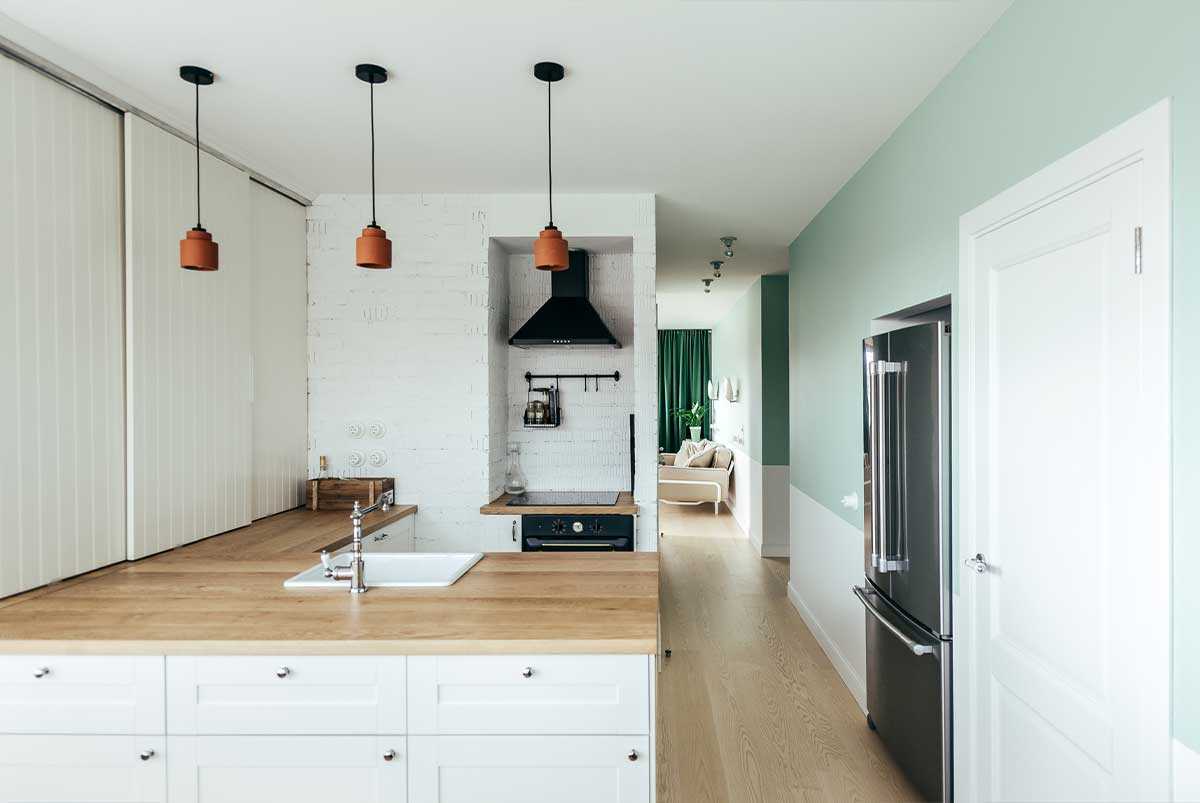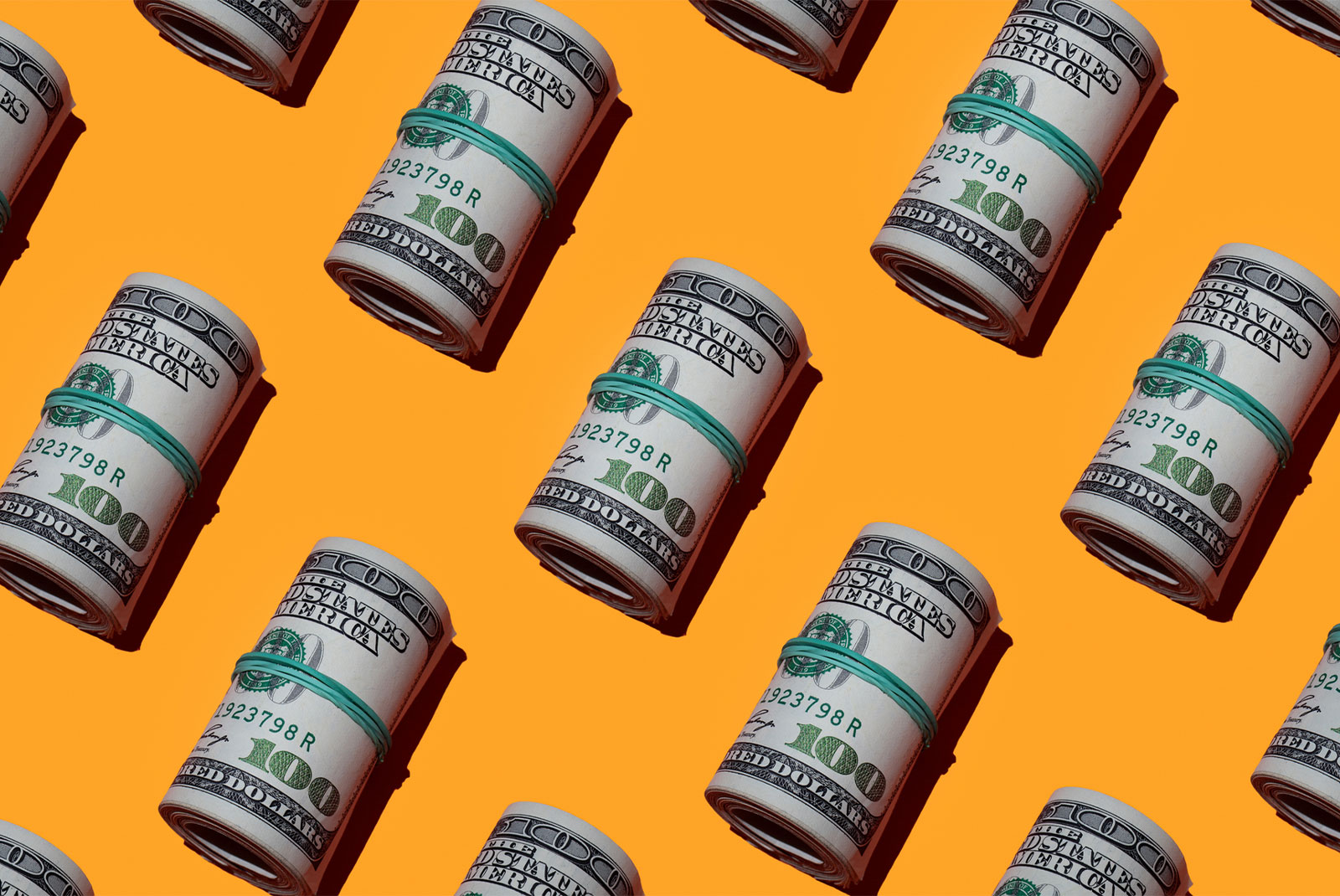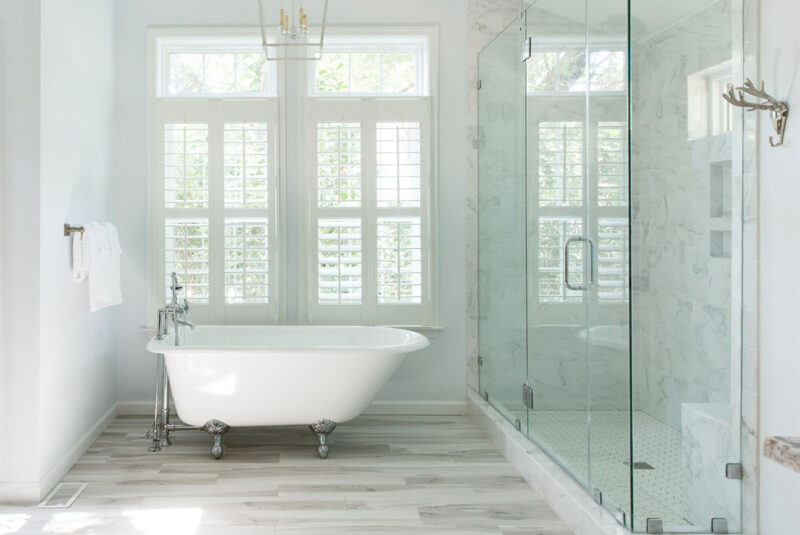Explore your mortgage options
Sometimes you need more cash than you have. That’s just the way it is. Whether it’s for home improvements, an emergency or something in between, two of the most popular financing options are home equity lines of credit (HELOCs) and personal loans. But which one should you choose?
To help you decide, we’re going to walk you through everything you need to know about HELOCs and personal loans so you can make the best decision based on your financial goals.
Ready for a Personal Loan?
Applying through Rocket LoansSM is fast and easy.
Checking your options won’t affect your credit score.
HELOC vs. Personal Loan: Key Differences
HELOCs allow you to borrow against the equity in your home, while personal loans are usually unsecured loans that get approved or denied based on the strength of your application.
The table below highlights the main differences between the two:
| HELOC | Personal Loan | |
| Collateral | Your home serves as collateral. | No collateral is required for unsecured personal loans. |
| Qualification Standards | You need a certain amount of home equity. Thresholds vary by lender, but usually around 20%. | Your credit score, debt-to-income (DTI) ratio and income history will be reviewed with your application |
| Value | $10,000 – 85% of your home’s value. Specifics vary by lender, but you probably can’t get a HELOC limit under $10k. | $2,000 – $45,000. Specifics vary by lender. |
| Disbursement | There’s a draw period where you can borrow against your credit limit. | A lump sum that’s paid after the loan is approved. |
| Potential Fees | Closing costs, origination fee, draw fee, annual fee, late fee, prepayment penalty | Origination fee, late payment penalty, prepayment penalty |
| Interest Rates | Usually variable, but you only pay interest on your balance | Usually fixed |
What Are the Pros and Cons of a HELOC?
To help you better understand the strengths and weaknesses of a HELOC and how they compare to those of personal loans, we’ve put together a list of pros and cons for you to consider.
PROS of a HELOC👍
Depending on how much equity you have, a HELOC could be approved for a much larger amount than a personal loan.
No matter how high your credit limit is, you’ll only owe interest on what you borrow, similar to a credit card.
The draw period (when you can take out money) usually lasts 10 – 15 years. During this period, you’ll only be required to make interest payments on what you borrow, making it more affordable initially.
The repayment periods are traditionally longer than the draw period and can be up to 20 years. This is a significantly longer term than what you’ll be able to get for a personal loan which can lower your required minimum monthly payment.
CONS of a HELOC👎
The approval process for a HELOC is considerably longer than for a personal loan, so if you need cash fast, it might not be your best option. Approval can take up to 45 days.
You’ll pay closing costs on a HELOC, which can be a significant expense as it’s calculated as a percentage of the amount you borrow.
Once the draw period ends, you’ll need to start paying back what you borrowed in addition to the interest on it. This can result in a significant increase depending on how much you borrowed.
HELOCs usually come with variable interest rates. Depending on what the broader economy does, your interest rate could rise over time, increasing your payments.
If you can’t make your payments, you risk losing your home.
What Are the Pros and Cons of Personal Loans?
When you need money, a personal loan can be a fast, easy solution. However, it’s not the best option for every scenario.
Figure out if personal loans work for your finances and future goals by taking a look at their pros and cons.
PROS of personal loans👍
Lenders can review your application quickly and disburse the funds fast if you’re approved. Some lenders can even do so in as little as one business day.
The interest rate is usually fixed, meaning it won’t change over the life of the loan. Interest rates are also usually lower than what you’d get for a credit card.
You don’t need to put up your home or anything else you have of value as collateral to qualify for an unsecured personal loan.
While you will likely pay an origination fee, there are no other closing costs associated with getting a personal loan which could save you a significant amount of money.
CONS of personal loans👎
Personal loans usually max out around $45,000. You can find exceptions, but you’ll usually need to put down collateral. If the expense is significant, a personal loan might not be enough to cover it.
Your credit score will factor into what kind of rates you’re offered. If you have a lower credit score, you’ll pay more in interest over the life of the loan and you might qualify for a lower loan amount.
Personal loan repayment terms usually max out around 7 years. While this can save you on total interest paid, it can also lead to higher monthly payments, especially compared to a 20-year repayment term for a HELOC.
There’s no draw period where you only owe interest. You’ll begin your full repayment the first month and continue it until the loan is paid off.
Which Is Better: A HELOC or a Personal Loan?
You can probably guess what we’re going to say, so we’ll keep it short: There is no right answer.
The better question to ask is which loan is better for your situation.
If you have a good amount of equity in your home, HELOCs offer serious perks like high borrowing limits and interest-only payments during the draw period. They can be a good option if you need lots of money for a big upgrade.
Personal loans are also a great option when you need to borrow a relatively small amount of cash. And, if you need money quickly, personal loans have the advantage.
Here are some situations when each option makes sense:
When to consider a HELOC
You can use a HELOC for anything, but you’ll get the most bang for your buck with:
- Home improvements: Smart upgrades, such as a kitchen update or landscaping, can increase the property’s value and build more equity.
- Real estate investments: If your finances are stable, a HELOC can help you get started in real estate investing. You can use the funds to buy another property or make a down payment on a second property. You can pay off the HELOC with the rental income you make.
When to consider a personal loan
There are times when the speed and convenience of a personal loan make it a better option for:
- Unexpected expenses: Sometimes life hits you with surprise expenses. Your car breaks down, or you break a tooth and need to pay for a root canal. You don’t have the luxury of time in these situations.
- Debt consolidation: Credit cards and private student loans can drown you in high interest rates. If you’re making payments on a variety of loans and credit each month, using a personal loan to consolidate your debt may be the right solution. You can pay off your debts with a lower-interest debt consolidation loan.
- Borrow without equity: Maybe you recently bought a home and you want to make upgrades, but you don’t have enough equity to qualify for a HELOC. Instead of waiting, you could get a personal loan to pay for the renovations. Just make sure you can afford your mortgage and the loan payments.
Alternatives to HELOCs and Personal Loans
HELOCs and personal loans aren’t your only financing options. Here are some popular alternatives to consider.
Home equity loans
Home equity loans also use your home’s equity as collateral, but instead of receiving a line of credit, you get a lump sum of cash. You pay interest on the total home equity loan amount. The payments, which are typically fixed, start right away.
Cash-out refinancing
Have interest rates dropped since you bought your house? Have you built up a decent amount of home equity?
You may want to consider a cash-out mortgage refinance. You take out a new mortgage for more than you currently owe on your home – ideally at a lower interest rate. You pay off the existing mortgage with your new mortgage and any money left over is yours to keep.
Credit cards
If you don’t need to borrow a lot of money, a credit card might be a better option than a HELOC. With a credit card, you can borrow what you need without having to put your home on the line.
You can even find some credit cards that offer 0% intro APR, meaning that you won’t owe interest initially.
Final Thoughts on HELOC vs. Personal Loan
When you want to make home improvements or cover surprise expenses, HELOCs and personal loans are two popular options. Both can get you the cash you need. You just need to know the pros and cons of each so you can make a choice that’s in line with your finances.
No matter which loan you choose, it’s important to be vigilant about your finances in general. The better financial position you’re in, the likelier it is that you’ll qualify for lower interest rates and a higher borrowing limit.
See What You Prequalify For
Get prequalified offers for personal loans from Rocket LoansSM within seconds. Like what you see? Same-day funding is available.
Checking your options won’t affect your credit score.
The Short Version
- You need a certain amount of equity in your home to qualify for a HELOC, while personal loan applications will review your credit score, debt-to-income ratio and income history
- HELOCs can be worth up to 85% of the value of your home, while unsecured personal loans usually max out around $45,000. The specifics depend on the lender you choose
- Personal loans don't require collateral, but they have lower borrowing limits, potentially higher interest rates and shorter repayment periods




